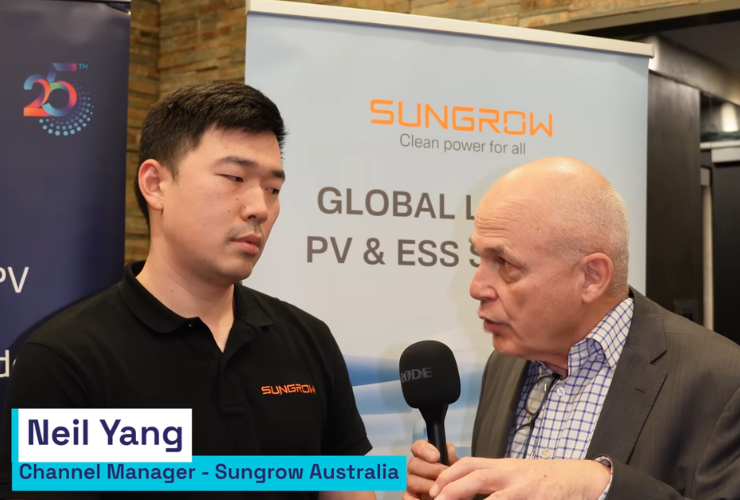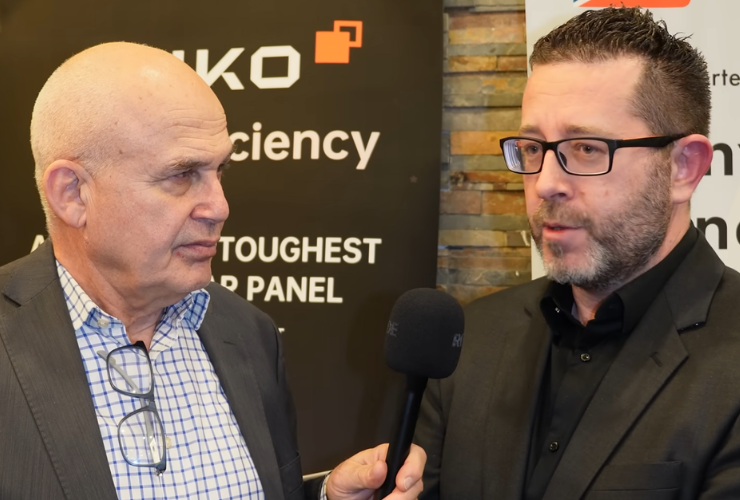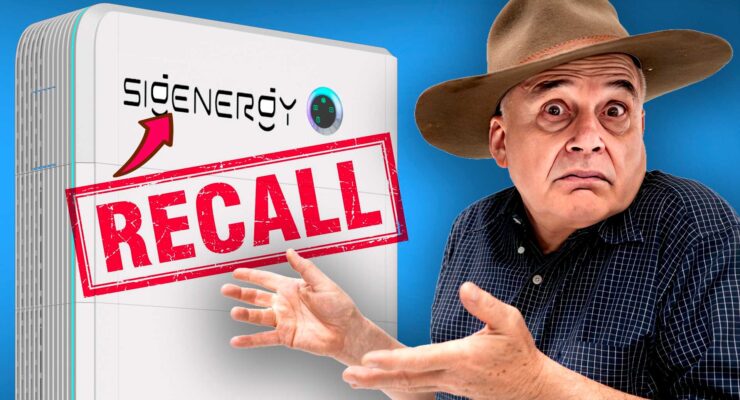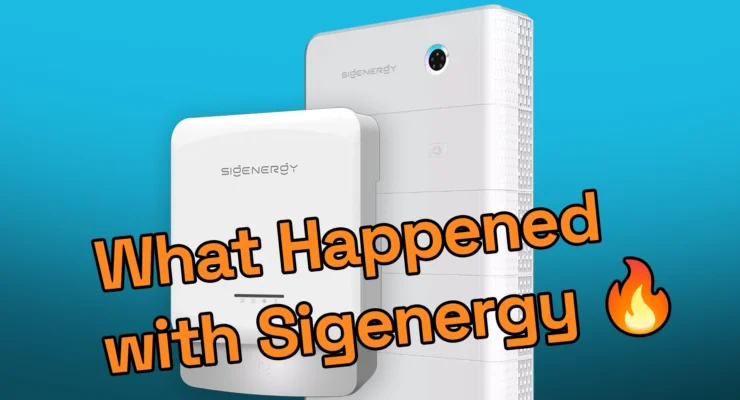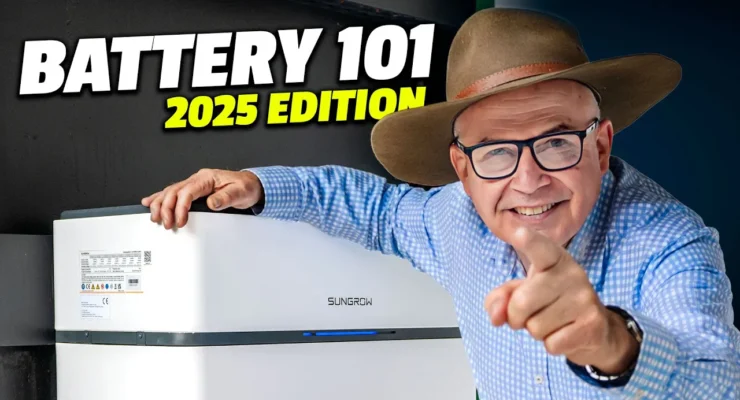
Why solar batteries are now essential
Australia once led the world in solar savings. But energy retailers have slashed solar feed-in tariffs — dropping payments from 10–15 cents per kWh down to just 2–4 cents in many states. That means exporting your excess solar to the grid is no longer profitable.
The solution? Pair your solar with a home battery. Store your own energy during the day and use it at night, when grid power costs 40–60 cents per kWh.
But here’s the catch: batteries aren’t cheap, and the Federal Battery Rebate (July 2025 launch) can only be claimed once. If you waste it on the wrong product, you’ll be locked out of the rebate forever.
That’s why we asked some of Australia’s most experienced solar installers (12–15+ years in the industry) to share their 10 best tips for buying a solar battery in 2025.
Tip 1: Don’t buy a cheap battery
Cheap container-shipped batteries from overseas often come with no support, no warranty, and no installer backup. When something goes wrong, you’re stuck.
Stick with trusted brands such as:
PowerPlus (Australian-made)
If you can’t afford a quality system now, it’s better to wait than waste your rebate.
Tip 2: Use monitoring to size your battery correctly
Consumption monitoring lets you track when you use power. For most households, the biggest demand is between 5–10 p.m. when solar panels aren’t producing.
A properly sized battery can save you $8–$12 every night, adding up to thousands per year.
Tip 3: Enjoy blackout protection
Modern lithium iron phosphate (LFP) batteries give you resilience during power outages. With the right setup, you can:
Keep your fridge running
Charge phones and laptops
Run ceiling fans and lights
Even use air conditioning sparingly during the day
This gives households indefinite blackout protection as long as your solar recharges the battery each day.
Tip 4: Understand warranties before you buy
Most batteries come with a 10-year warranty, but many are pro-rata. That means if your battery fails in year 8, you may only get a partial replacement value.
Also, check workmanship warranties. If an installer offers 10 years, make sure they’ve been around at least 15–20 years to back it up.
Tip 5: Don’t waste your one-off rebate
The new Cheaper Home Batteries Program (Federal Battery Rebate 2025) is a once-only subsidy. If you buy a cheap, unsupported battery and it fails, you won’t get another rebate.
Use your rebate on a quality product from a trusted installer the first time.
Tip 6: Earn money with Amber Electric
With Amber Electric, batteries can participate in wholesale energy trading. When grid prices spike (sometimes up to $13/kWh), your battery can discharge automatically into the grid.
Some households earn $50–$60 in a single night this way. For many, this transforms batteries from a savings tool into an income-generating asset.
Tip 7: Make sure you have enough solar to charge the battery
A battery is useless if it’s empty. To keep it worthwhile, you need enough solar capacity on your roof.
Minimum: 5 kW solar system
Best for larger homes / EV owners: 10–15 kW solar system
The more solar you generate, the faster your battery pays for itself.
Tip 8: Battery placement must meet Australian standards
Batteries can’t just go anywhere. Under AS/NZS 5139 standards, they:
Must be away from windows and living spaces
Need fire-rated sheeting if attached to timber walls
Are best placed in garages or external walls with protective sheeting
A good installer will balance safety, compliance, and convenience when choosing the location.
Tip 9: Choose safer battery chemistry (LFP)
Not all lithium batteries are the same. The safest and most reliable are lithium iron phosphate (LFP), which:
Last longer (6,000+ cycles)
Have lower fire risk
Avoid problematic cobalt supply chains
Nearly all leading home batteries in Australia are now shifting to LFP chemistry.
Tip 10: Installation quality matters more than the brand
Even the best battery can fail if installed poorly. Common issues include:
Loose connections
Incorrect wiring
Poor system design
A skilled installer is more important than the brand itself. Choose companies with 10+ years of experience and a proven track record in solar + battery systems.
Final thoughts: Don’t cut corners on your battery
Solar batteries in Australia are no longer just a luxury — they’re fast becoming essential in 2025. With feed-in tariffs gutted and power prices rising, a solar + battery combo is the smartest way to reduce bills and protect against blackouts.
But with the one-off Federal Battery Rebate, you can’t afford to get it wrong. Follow these 10 expert tips, choose a reputable installer, and invest in a system that will serve you for the next decade.
At Your Energy Answers, we’ve vetted more than 40 trusted solar installers across Australia who deliver quality systems, compliant installs, and long-term support. If you’re considering a battery, we can connect you to the right experts.

